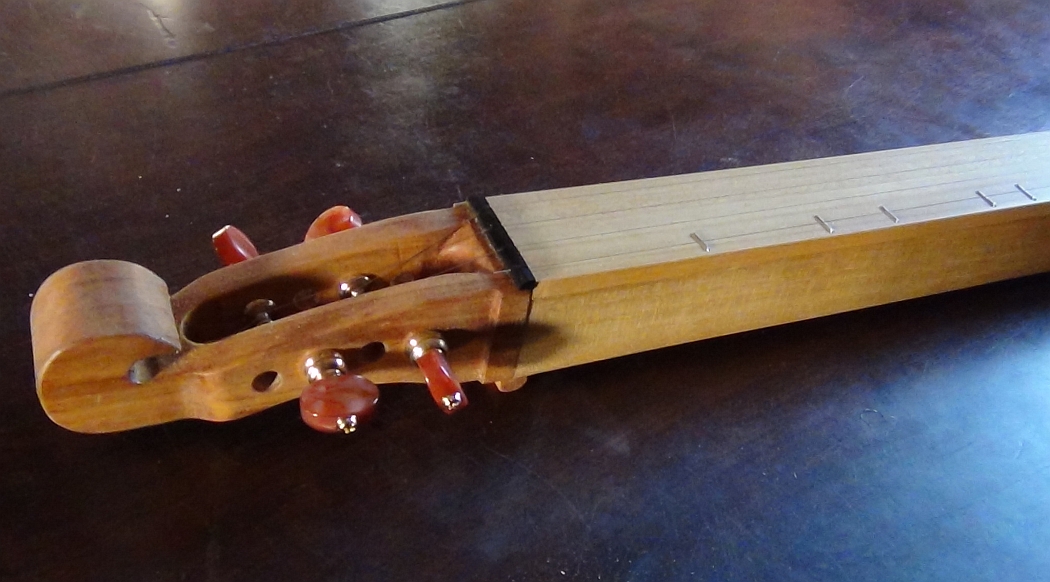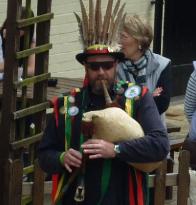New project finished - a `Swedish' hommel
After being much inspired by Peter W.'s versions of a Praetorius 1620 illustration of the German Scheitholt in Sintagma Musicum I thought I'd have a go myself - after all it looked so easy! I could have gone for a direct recreation of the illustration, which has an iolian scale from the open string, but I've already got plenty of ability to play in that mode on both my hourglass and TMB dulcimers. So for something different I opted for a `Swedish' diatonic scale that you simply can't play on an ordinary dulcimer. I've put Swedish in speech marks because this scale isn't actually all that common in Swedish music, but it is a feature of the Swedish bagpipes which I also play and I thought it would be nice to have a dulcimer I could play these tunes on. In any case I've seen a photo on the net somewhere of a Swedish hommel which was pretty much just like this, though with a normal dulcimer scale and an open back...
Here's a couple of photos of the finished instrument. It's tuned e,e,e,e and has staple frets under the melody string only. I only put frets in position for the notes my Swedish pipes can play. This scale is:
E, F#, G#, A, B, C, D, E, Fnat.
Swedish pipe tunes all seem to have an A tonic. The pipes themselves also only have a drone in E the same as the bottom note of the scale, which my tuning imitates.
I'm quite pleased with the way it's turned out though it's a bit quiet even when played on a table. Wood is possibly some sort of beech for the soundbox and cherry for the tailstock and tuning head. Bridge and nut are african blackwood.


